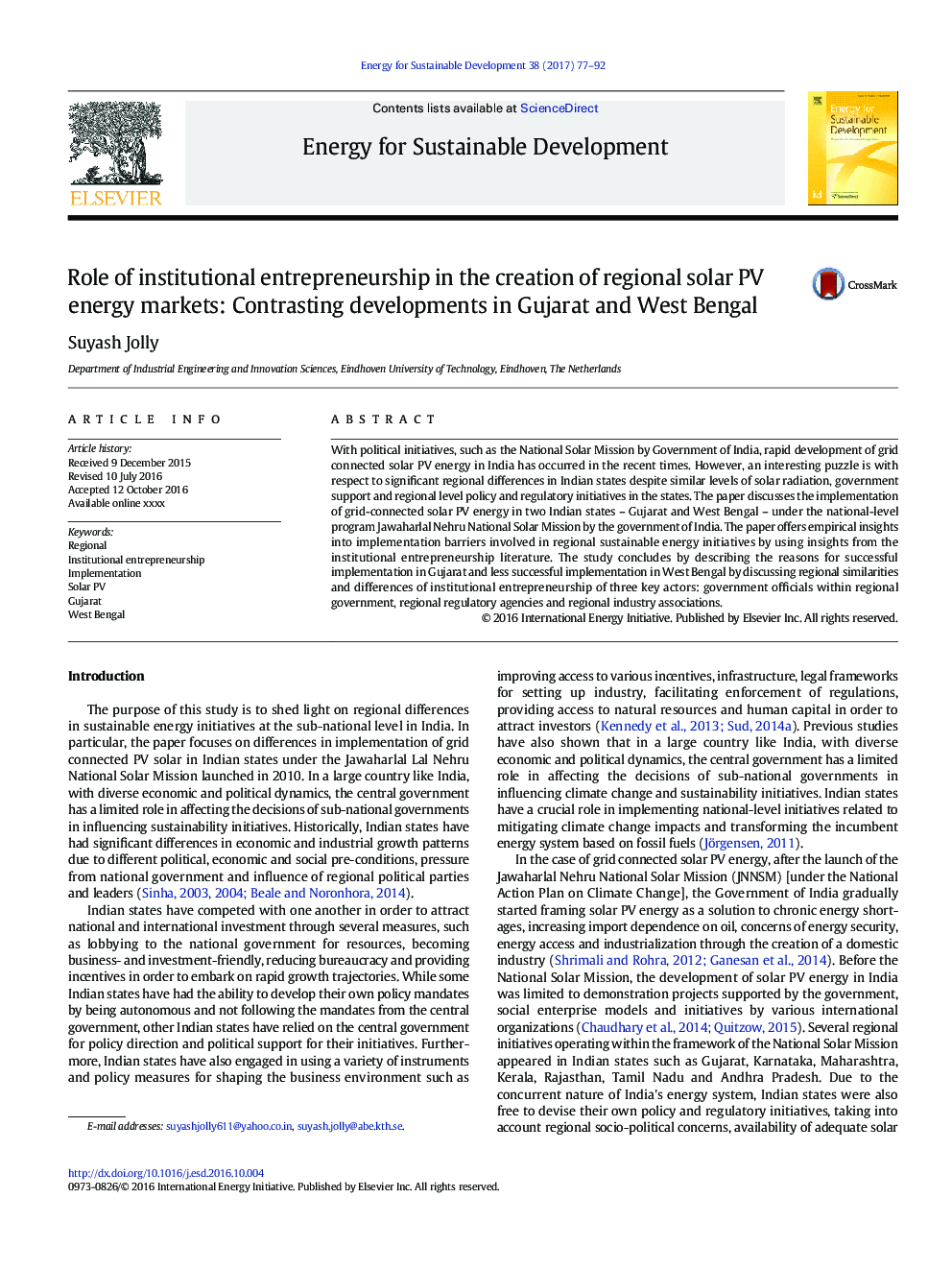| Article ID | Journal | Published Year | Pages | File Type |
|---|---|---|---|---|
| 5114371 | Energy for Sustainable Development | 2017 | 16 Pages |
Abstract
With political initiatives, such as the National Solar Mission by Government of India, rapid development of grid connected solar PV energy in India has occurred in the recent times. However, an interesting puzzle is with respect to significant regional differences in Indian states despite similar levels of solar radiation, government support and regional level policy and regulatory initiatives in the states. The paper discusses the implementation of grid-connected solar PV energy in two Indian states - Gujarat and West Bengal - under the national-level program Jawaharlal Nehru National Solar Mission by the government of India. The paper offers empirical insights into implementation barriers involved in regional sustainable energy initiatives by using insights from the institutional entrepreneurship literature. The study concludes by describing the reasons for successful implementation in Gujarat and less successful implementation in West Bengal by discussing regional similarities and differences of institutional entrepreneurship of three key actors: government officials within regional government, regional regulatory agencies and regional industry associations.
Related Topics
Physical Sciences and Engineering
Energy
Energy (General)
Authors
Suyash Jolly,
